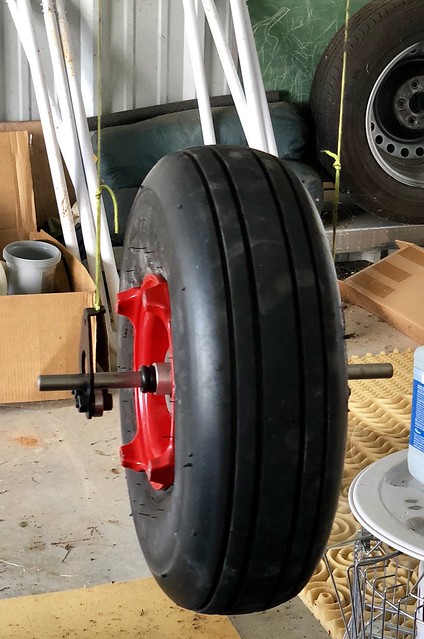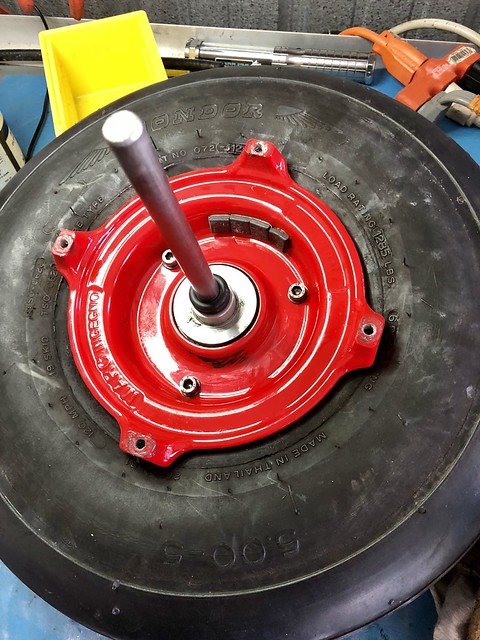FastEddieB
Touchdown! Greaser!
- Joined
- Oct 14, 2013
- Messages
- 11,421
- Location
- Lenoir City, TN/Mineral Bluff, GA
- Display Name
Display name:
Fast Eddie B
I was in the process of balancing my Sky Arrow wheels after installing new tubes.
A fellow stopped by and noted that he had never done that and had never had a problem. Said tires were marked with a dot and as long as that aligned with the valve stem he was good to go.
Over a handful of aircraft I've owned, I have noticed shaking, mainly after takeoff, from unbalanced wheels. Hence I always check mine when installing a new tire or tube.
I use a handy device called a "Beemer Balancer", designed for motorcycles but perfect for aircraft wheels as well.

Its not unusual to need weights, as I did today:

So, just curious...
A fellow stopped by and noted that he had never done that and had never had a problem. Said tires were marked with a dot and as long as that aligned with the valve stem he was good to go.
Over a handful of aircraft I've owned, I have noticed shaking, mainly after takeoff, from unbalanced wheels. Hence I always check mine when installing a new tire or tube.
I use a handy device called a "Beemer Balancer", designed for motorcycles but perfect for aircraft wheels as well.

Its not unusual to need weights, as I did today:

So, just curious...

